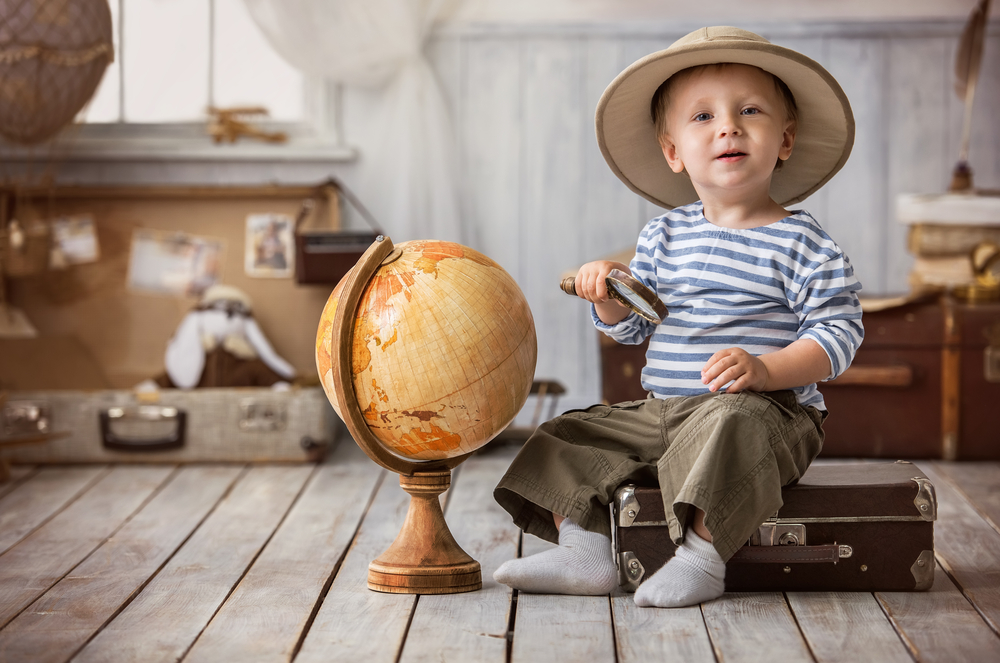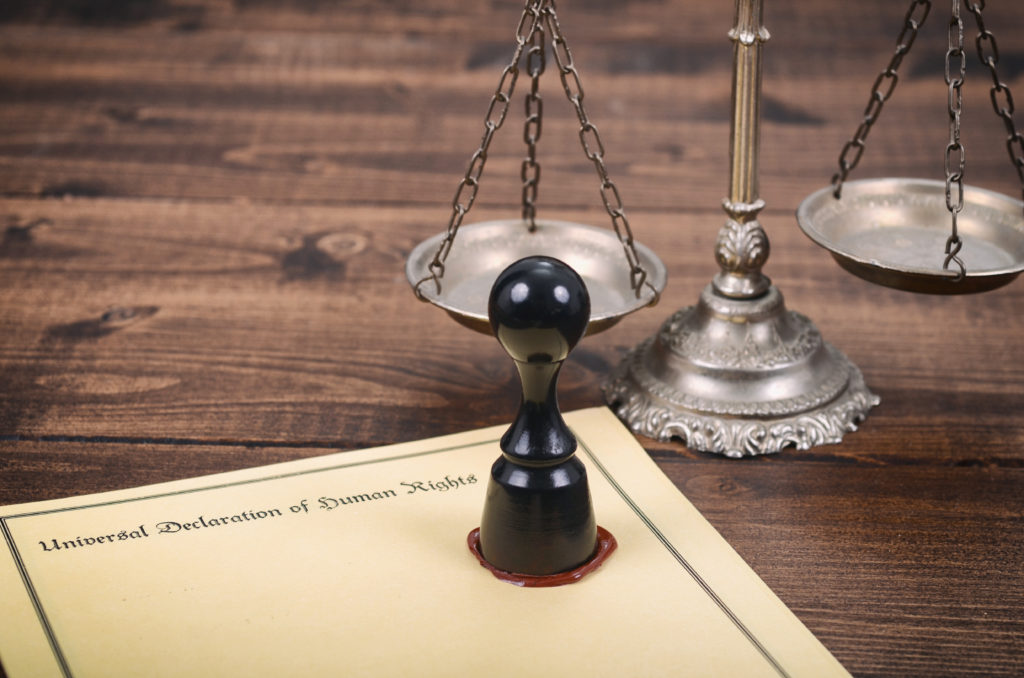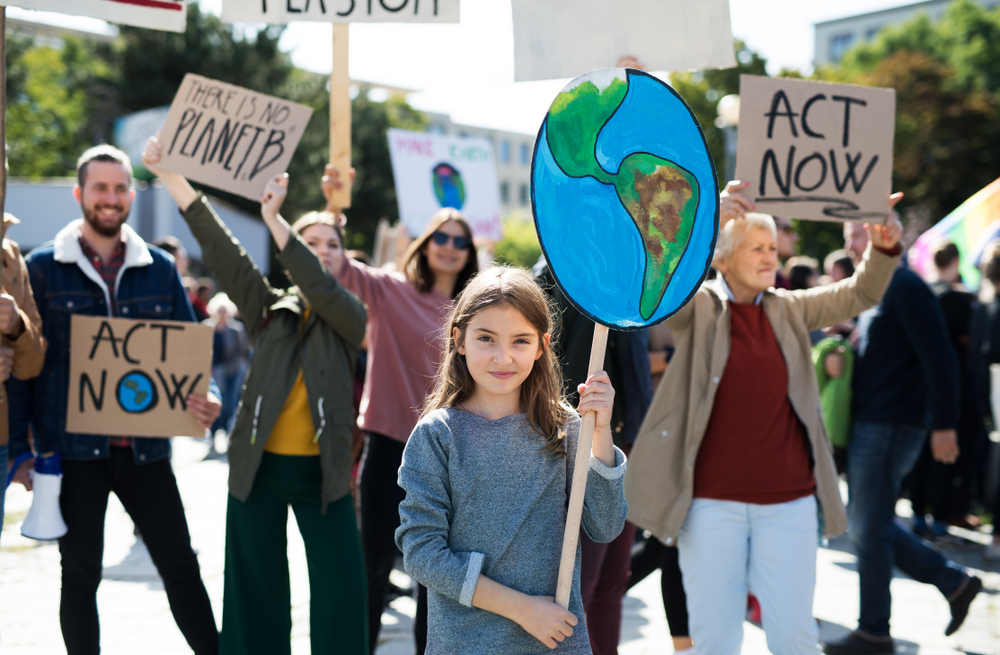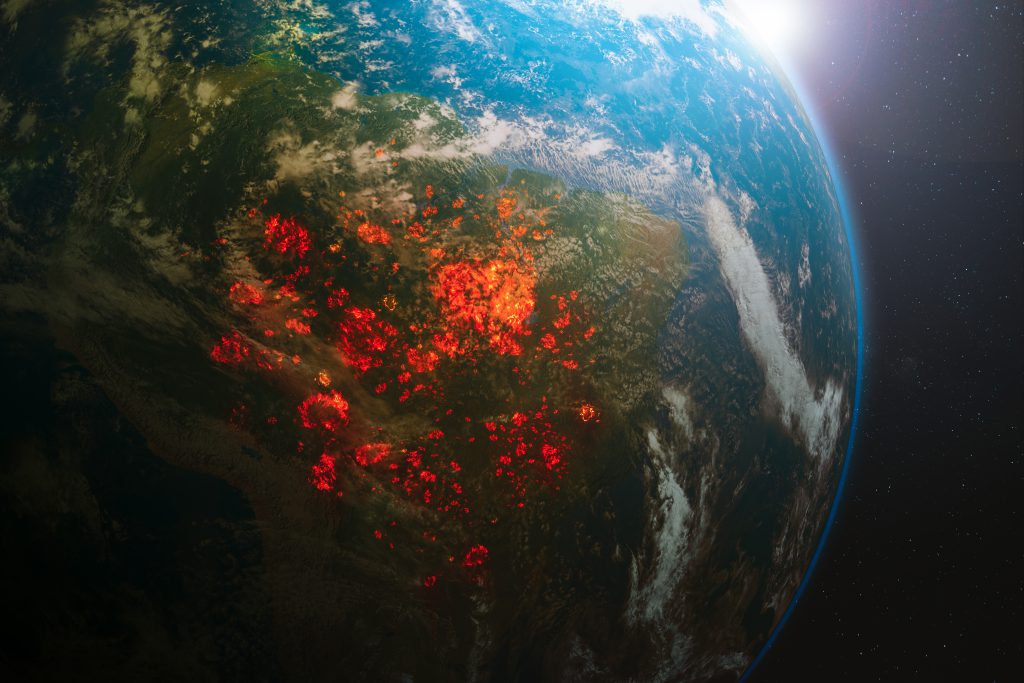Children’s rights, as a distinct category within human rights, have undergone significant transformations throughout history. Once considered mere extensions of their parents with no individual rights, children are now recognized as autonomous individuals with distinct needs and protections. This evolution is a testament to the evolving understanding of childhood and human dignity. However, despite significant strides, ensuring these rights for all children remains a work in progress.

Ancient and medieval views on children
In ancient societies, children were often regarded as property rather than individuals with rights. In ancient Rome, for example, the concept of patria potestas granted fathers almost absolute power over their children, including the right to sell, expose, or even kill them without legal repercussions (Britannica, n.d.). Children were seen primarily as economic assets, valued for their labor or the alliances their marriages could secure. Similarly, in ancient Greece, children had few rights, and their welfare was largely dependent on the decisions of their parents or guardians.
The Middle Ages did not significantly improve the status of children. In medieval Europe, for example, even if dearly loved by their parents, children were often considered small adults, expected to contribute to the household economy from a very young age (Snell, 2019). There was little legal or societal recognition of children’s unique needs and vulnerabilities. Education was limited to the privileged few, and child labor was rampant, with children as young as five or six working in fields, mines, and workshops.
The Enlightenment and the birth of modern childhood
The Enlightenment of the 17th and 18th centuries marked a turning point in the conceptualization of childhood and children’s rights. Philosophers like John Locke and Jean-Jacques Rousseau began to challenge the notion of children as small adults, arguing instead that childhood was a unique and formative stage of life that required special care and education.
Locke, in his Essay Concerning Human Understanding, posited that children were born as tabula rasa (blank slates), and that their development depended on the experiences and education they received (Locke, 1690). In his Emile, Rousseau distinctly presents children as fundamentally different from adults, emphasizing the various stages of their development and the necessity of treating them in ways appropriate to their growth (Wilkinson, 2006).
These and similar Enlightenment ideas laid the groundwork for a new understanding of children’s rights. They suggested that children were not just the property of their parents but were individuals with their own rights to education, protection, and care.
This period also saw the beginnings of state involvement in children’s welfare, particularly in the area of education. For example, Prussia introduced compulsory elementary education in 1763, reflecting a growing recognition of the state’s role in ensuring that children received the education necessary to become informed and responsible citizens (Yeban, 2024).
The Industrial Revolution and the rise of child protection laws

The Industrial Revolution of the 19th century brought dramatic social and economic changes that had profound effects on children. As factories sprang up across Europe and North America, children were often employed as cheap labor, working long hours in dangerous and unhealthy conditions. The exploitation of child labor during this period was widespread, with children as young as five working in mines, mills, and factories for meager wages (Radfar et al, 2018). This exploitation led to growing public outrage, which in turn led to legislative reforms.
The first significant legislative efforts to protect children from exploitation came in the form of factory acts in the United Kingdom. The Factory Act of 1833 was a landmark piece of legislation that restricted the working hours of children and mandated factory inspections to enforce these restrictions. It prohibited children under nine from working in textile factories, limited the working hours of children aged nine to thirteen to eight hours a day, and required that they receive at least two hours of schooling each day (Britannica, n.d). This was followed by the Mines Act of 1842, which banned the employment of boys under ten and all females in underground coal mines (UK Parliament, n.d).
Similar reforms were enacted in the United States, although often at the state rather than federal level. For example, Massachusetts passed the first state law mandating compulsory schooling in 1852, reflecting a growing recognition that education was crucial to breaking the cycle of poverty and exploitation (Yeban, 2024). By the late 19th century, the movement to protect children had gained momentum worldwide.
The early 20th century: the birth of the modern children’s rights movement
The early 20th century saw the birth of the modern children’s rights movement, characterized by a growing recognition of children’s rights as distinct from those of adults. This period was marked by the emergence of international organizations and committees dedicated to children’s welfare.
In 1919, the Child Welfare Committee was created as the first step taken by the international community, and not only at the level of individual states (Jimeno, 2020). This was followed by Eglantyne Jebb, a pioneering advocate for children’s rights, drafting the first international declaration on children’s rights, namely the Declaration of the Rights of the Child (Museum of Cambridge, n.d).
The Declaration of the Rights of the Child, adopted by the League of Nations in 1924, was a groundbreaking document that laid the foundation for modern children’s rights. Often referred to as the Geneva Declaration, it consisted of five key principles:
- Children must be given the means for normal development, both materially and spiritually;
- hungry children must be fed, sick children nursed, backward children helped, delinquent children reclaimed, and orphans sheltered;
- Children must be the first to receive relief in times of distress;
- Children must be put in a position to earn a livelihood and be protected from exploitation;
- Children must be brought up with the consciousness that their talents must be devoted to the service of fellow human beings (D’Costa and Liefaard, 2017).
The Geneva Declaration was a significant step forward, but it was not legally binding and had a limited impact on national policies. Nevertheless, it established the principle that children have specific rights and that the international community has a role in protecting these rights.
Post-World War II: The United Nations and the Universal Declaration of Human Rights

The end of World War II and the establishment of the United Nations (UN) in 1945 marked a new era in the development of children’s rights. The horrors of the war, including the widespread suffering of children, emphasized the need for stronger international protections for the rights of all individuals, including children. The Universal Declaration of Human Rights (UDHR), adopted by the UN General Assembly in 1948, was a landmark document that affirmed the dignity and rights of all human beings, regardless of age.
Article 25 of the UDHR specifically addresses children’s rights, stating that “motherhood and childhood are entitled to special care and assistance” and that “all children, whether born in or out of wedlock, shall enjoy the same social protection” (United Nations, 1948). This recognition of the need for special protections for children was a significant advancement, laying the groundwork for subsequent international treaties and conventions focused on children’s rights.
In 1959, the UN adopted the Declaration of the Rights of the Child, which expanded on the principles of the 1924 Geneva Declaration. This new declaration consisted of ten principles, including the right to a name and nationality, the right to education, the right to protection from neglect and exploitation, and the right to grow up in an atmosphere of love and understanding.
Like its predecessor, however, the 1959 Declaration was not legally binding, and its impact was limited by the lack of enforcement mechanisms. However, it did pave the way to the Convention on the Rights of the Child, which remains to this day the most comprehensive and widely ratified international treaty concerning children’s rights.
The Convention on the Rights of the Child (CRC)
While the period post World War II saw substantial improvements, the adoption of the Convention on the Rights of the Child (CRC) by the UN General Assembly on November 20, 1989, was the most significant milestone in children’s rights history. Ratified by 196 countries as of 2024, the CRC established a set of binding obligations for states to protect and promote the rights of children (United Nations Treaty Collections, 2024).
The CRC is based on four core principles: non-discrimination, the best interests of the child, the right to life, survival, and development, and respect for the views of the child. It covers a wide range of rights, including civil, political, economic, social, and cultural rights. Some of the key provisions of the CRC include the right to education, the right to be protected from all forms of violence, the right to health care, the right to be heard in matters affecting them, and the right to family life.
One of the most significant aspects of the CRC is its recognition of children as active participants in their own lives, capable of expressing their views and having those views taken into account in decisions that affect them (United Nations, 1989). This represents a significant departure from earlier conceptions of children as passive recipients of care and protection. The CRC also established the Committee on the Rights of the Child, a body of independent experts responsible for monitoring the implementation of the Convention.
Post-CRC adoption period
The African Charter for the Rights and Welfare of the Child, adopted in 1990 by the Organization for African Unity, addressed issues specific to African children. It came into force in 1999 and has been ratified by fifty African Union member States, while five Member States have not ratified it as of 2024 (ACERWC, 2024).
Another important step in improving children’s rights has been the 1999 adoption of the Worst Forms of Child Labour Convention. The aim of the convention was to stipulate the five worst forms of child labour that are to be eradicated and, in that way, provide prioritization in terms of fighting child labour (International Labour Office and the Inter-Parliamentary Union, 2002).
In addition, in 2000, the Optional Protocol to the International Charter of the Rights regarding the participation of children in armed conflicts was ratified. It entered into force in 2002 and prohibits minors from taking part in armed conflicts.
Work in progress
From being considered possessions to the contemporary state of being, the position of children has changed drastically throughout history. However, despite the significant strides made, especially in establishing legal frameworks and international treaties, there is still a considerable gap between these standards and their implementation on the ground.
Many children continue to face violations of their rights. Global crises, primarily numerous ongoing wars, lead to displacement and migration, which force millions of children into vulnerable situations, stripping them of access to education, healthcare, and safety. Displaced children are often exposed to exploitation, abuse, and trafficking. In regions affected by female genital mutilation (FGM), many girls face this harmful practice, violating their bodily autonomy and causing long-term physical and emotional damage.
Child labour also persists as one of the most prominent issues, with an estimated 160 million children engaged in it globally (ILO, 2020). Additionally, climate change exacerbates these challenges by displacing communities, disrupting livelihoods, and worsening food insecurity, leaving children disproportionately affected and unable to enjoy their basic rights to a healthy, secure future.

To advance children’s rights, the enforcement of existing laws and international treaties should be strengthened. Governments should invest in comprehensive child protection systems, including specialized training for law enforcement and judicial officials in children’s rights.
Society as a whole should foster a culture of accountability and advocacy, ensuring that children’s voices are heard and their rights upheld in both policy and practice. While a lot has been done, the journey toward fully realizing children’s rights is far from complete.
Written by Zeljka Mazinjanin
Internally proofread by Aditi Partha
Last updated on September 11, 2024
Bibliography:
ACERWC (2024), Overview Of The African Charter On The Rights And Welfare Of The Child. retrieved from ACERWC, available at https://www.acerwc.africa/en/page/about-the-charter, accessed on August 29, 2024.
Britannica (n.d),. Factory Act. Retrieved from Britannica, available at https://www.britannica.com/event/Factory-Act-United-Kingdom-1833, accessed on August 27, 2024.
Britannica (n.d), Patria potestas. Retrieved from Britannica, available at https://www.britannica.com/topic/patria-potestas, accessed on August 27, 2024.
D’Costa Bina and Liefaard Ton (2017), Human Rights and Children, 17th Informal ASEM Seminar on Human Rights. Retrieved from Asia-Europe Foundation, available at https://asef.org/wp-content/uploads/2020/10/Background-Paper.pdf, accessed on August 29, 2024.
International Labour Office and the Inter-Parliamentary Union (2002), Eliminating the worst forms of child labour. Retrieved from International Labour Office and the Inter-Parliamentary Union, available at http://archive.ipu.org/PDF/publications/childlabour_en.pdf, accessed on August 29, 2024.
International Labour Organization. (2020). Child labour: Global estimates 2020, trends and the road forward. Retrieved from International Labour Organization, available on https://www.ilo.org/sites/default/files/wcmsp5/groups/public/@ed_norm/@ipec/documents/publication/wcms_797515.pdf, accessed on September 11, 2024.
Jimeno Roldan (2020), The birth of children’s rights between the First and Second World Wars: The historical events leading up to the Convention. Retrieved from the Library of Science, available at
https://bibliotekanauki.pl/articles/1945355, accessed on August 29, 2024.
Locke John(1690), An Essay Concerning Human Understanding. Retrieved from The Project Gutenberg, available at https://www.gutenberg.org/files/10615/10615-h/10615-h.htm, accessed on August 27, 2024.
Museum of Cambridge (n.d), Eglantyne Jebb, Founder of Save The Children. Retrieved from Museum of Cambridge, available at https://www.museumofcambridge.org.uk/resources/family-fun/story-time-with-cambridge-characters/eglantyne-jebb-founder-of-save-the-children/, accessed on August 29, 2024.
Radfar Amir et al (2018), Challenges and perspectives of child labor. Retrieved from National Library of Medicine, available at https://www.ncbi.nlm.nih.gov/pmc/articles/PMC6198592/, accessed on August 27, 2024
Snell Melissa (2019), Work and Adolescence in the Middle Ages. Retrieved from ThoughtCo. available at https://www.thoughtco.com/medieval-child-teens-at-work-and-play-1789126, accessed on August 27, 2024.
UK Parliament ( n.d), Coal mines. Retrieved from UK Parliament, available at https://www.parliament.uk/about/living-heritage/transformingsociety/livinglearning/19thcentury/overview/coalmines/, accessed on August 27, 2024.
United Nations (1989), Convention on the Rights of the Child. retrieved from the United Nations, available at https://www.ohchr.org/en/instruments-mechanisms/instruments/convention-rights-child, accessed on August 29, 2024.
United Nations (1945), Universal Declaration of Human Rights. retrieved from the United Nations, available at https://www.un.org/en/about-us/universal-declaration-of-human-rights, accessed on August 29, 2024.
United Nations Treaty Collections (2024), 11.Convention on the Rights of the Child. Retrieved from United Nations Treaty Collections, available at https://treaties.un.org/Pages/ViewDetails.aspx?src=TREATY&mtdsg_no=IV-11&chapter=4&clang=_en, accessed on August 29, 2024.
Wilkinson, J Eric (2006), Early Years Pioneers: Jean-Jacques Rousseau. Retrieved from Nursery World, available at https://www.nurseryworld.co.uk/content/features/early-years-pioneers-jean-jacques-rousseau, accessed on September 11. 2024.
Yeban Jade (2024), Compulsory Education Laws: Background. Retrieved from FindLaw, available at https://www.findlaw.com/education/education-options/compulsory-education-laws-background.html, accessed on August 27, 2024.
Zinkina Julia et al (2016), Mass Primary Education in the Nineteenth Century. Retrieved from Social Studies, available at https://www.sociostudies.org/almanac/articles/mass_primary_education_in_the_nineteenth_century/, accessed on August 27, 2024.

